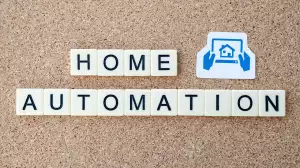Automation Home: The Future of Smart Living
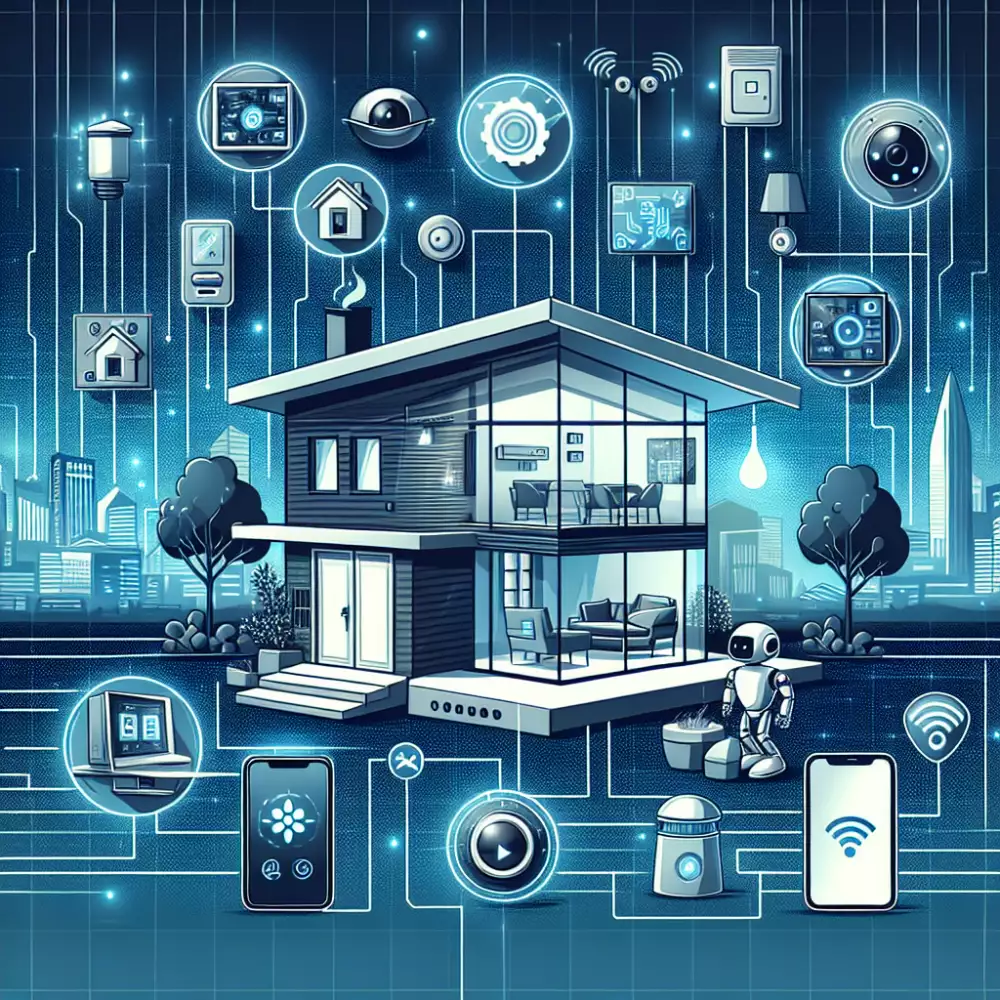
- Smart Lighting Systems
- Automated Temperature Control
- Smart Security and Surveillance
- Automated Entertainment Systems
- Smart Appliances
- Voice Control Integration
- Energy Management Systems
- Automated Window Treatments
- Smart Irrigation Systems
- Automated Home Access Control
- Home Network and Connectivity
- Predictive Maintenance Features
- Integration and Interoperability
- Emerging Trends in Home Automation
- Artificial Intelligence (AI) Gets Smarter
- The Rise of Matter
- Energy Efficiency at the Forefront
- Enhanced Home Security
Smart Lighting Systems
Smart lighting systems are transforming houses into futuristic and energy-efficient living spaces. Gone are the days of fumbling for light switches. With smart lighting, you can control your home's illumination using your smartphone or voice commands. Imagine dimming the lights for a movie night or waking up to a gradually brightening bedroom. Smart bulbs and switches connect to your home's Wi-Fi network, allowing you to control them from anywhere in the world. Set schedules to automatically turn lights on and off, deterring burglars and saving energy. Some systems even integrate with motion sensors, illuminating pathways as you move through your home. Smart lighting isn't just about convenience; it's about creating the perfect ambiance for every occasion and reducing your carbon footprint. By automatically adjusting to ambient light levels and your daily routines, smart lighting systems minimize energy waste without compromising your comfort.
Automated Temperature Control
Imagine stepping into a home where the temperature is always perfect, adjusting automatically to your preferences. That's the promise of automated temperature control, a key aspect of today's smart homes. Gone are the days of fiddling with thermostats. Smart thermostats, often controlled by your smartphone or voice, learn your habits and adjust the temperature accordingly. They can even factor in external conditions like the weather to optimize energy usage.
Imagine this: you wake up to a comfortably warm house, even before the sun rises. As you leave for work, the system automatically adjusts to a more energy-efficient setting, saving you money on your bills. Later, it anticipates your arrival home, ensuring a perfectly comfortable environment awaits you.
But automated temperature control is about more than just convenience and cost savings. It's also about creating a healthier and more comfortable living environment. By maintaining optimal humidity levels and air circulation, these systems can contribute to better indoor air quality, which is particularly beneficial for allergy sufferers or those with respiratory conditions.
With the integration of artificial intelligence and machine learning, automated temperature control systems are becoming increasingly sophisticated, offering a glimpse into a future where our homes are truly intelligent and responsive to our needs.
Smart Security and Surveillance
Smart homes are becoming increasingly popular, as they offer a wide range of benefits, including convenience, security, and energy efficiency. One of the most significant advantages of a smart home is the ability to enhance security and surveillance.
Smart security systems go beyond traditional alarm systems by integrating sensors, cameras, and intelligent automation. With motion detectors strategically placed throughout your home, you can receive instant alerts on your smartphone whenever unusual activity is detected. Door and window sensors provide an extra layer of protection by notifying you if any entry points are opened unexpectedly.
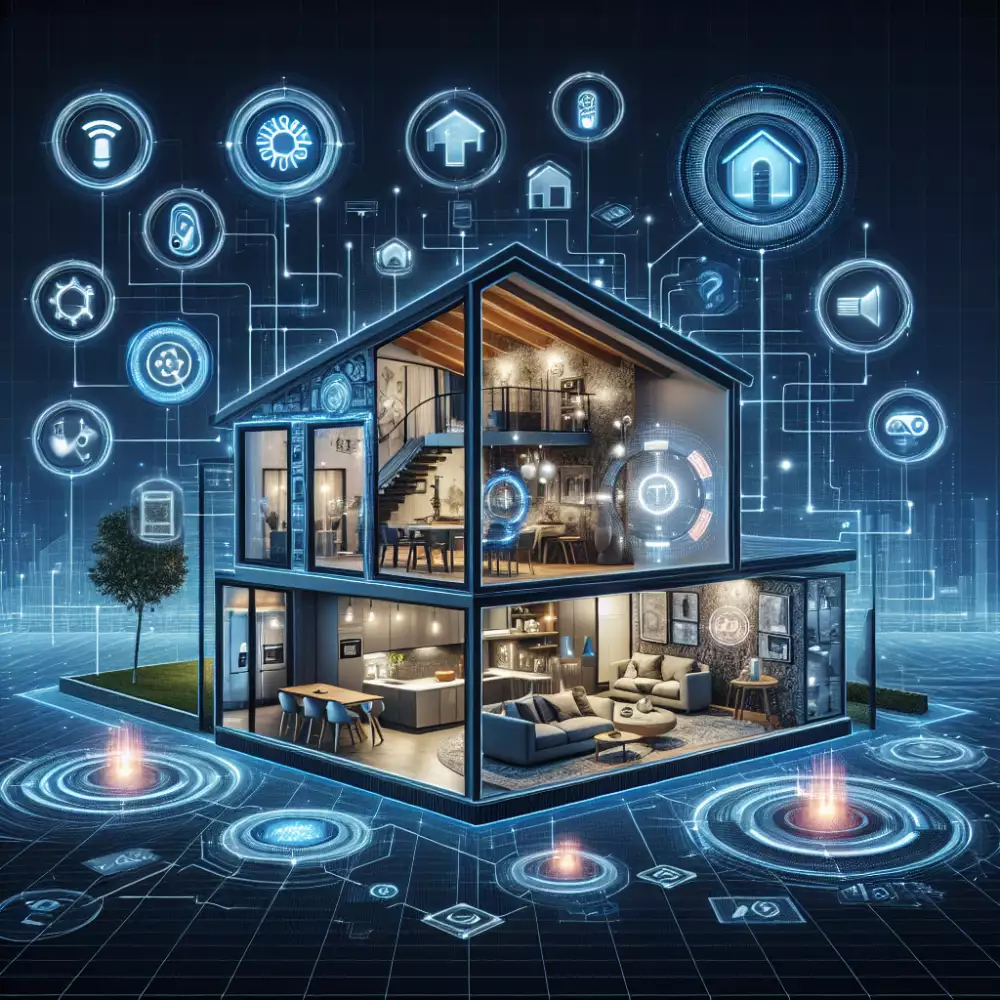
Smart cameras offer a live feed of your property, allowing you to monitor your home from anywhere in the world. These cameras often come equipped with features like facial recognition and object detection, enabling them to distinguish between familiar faces and potential threats. Cloud storage options allow you to store footage securely and access it remotely whenever needed.
The integration of smart devices and automation further enhances home security. For example, you can program your smart lights to turn on and off at specific times, creating the illusion of occupancy even when you're away. Similarly, you can connect your security system to your smart door locks, allowing you to remotely lock or unlock your doors from your smartphone.
By leveraging the power of technology, smart security and surveillance systems provide homeowners with peace of mind and enhanced protection. The ability to monitor your home remotely, receive instant alerts, and automate security measures creates a safer living environment for you and your loved ones.
Automated Entertainment Systems
Automated entertainment systems have become a defining feature of the modern smart home. Imagine this: as you step through the door, your favorite playlist starts flowing from the speakers, the lights adjust to a cozy ambiance, and the TV automatically tunes to your preferred news channel. This level of personalized entertainment is now easily achievable with the latest home automation technology.
At the heart of these systems is a central hub, often a dedicated device or integrated software, that connects and controls all your entertainment devices. This could include your TV, sound system, streaming devices, gaming consoles, and even smart lighting and motorized blinds.
Voice assistants like Alexa or Google Assistant add another layer of convenience, allowing you to control everything with simple voice commands. Want to watch the latest blockbuster? Just ask! Feeling a bit more musical? Request your favorite album and let the music fill your home.
Automated entertainment systems go beyond simply controlling devices. They can learn your preferences and routines, suggesting content you might enjoy or automatically adjusting settings based on your habits. Imagine the system dimming the lights and optimizing the surround sound as movie night approaches, all without lifting a finger.
The beauty of these systems lies in their ability to seamlessly blend into the background, enriching your entertainment experience without requiring constant manual adjustments. They offer a glimpse into a future where technology anticipates our needs, creating a truly immersive and personalized entertainment haven within our homes.
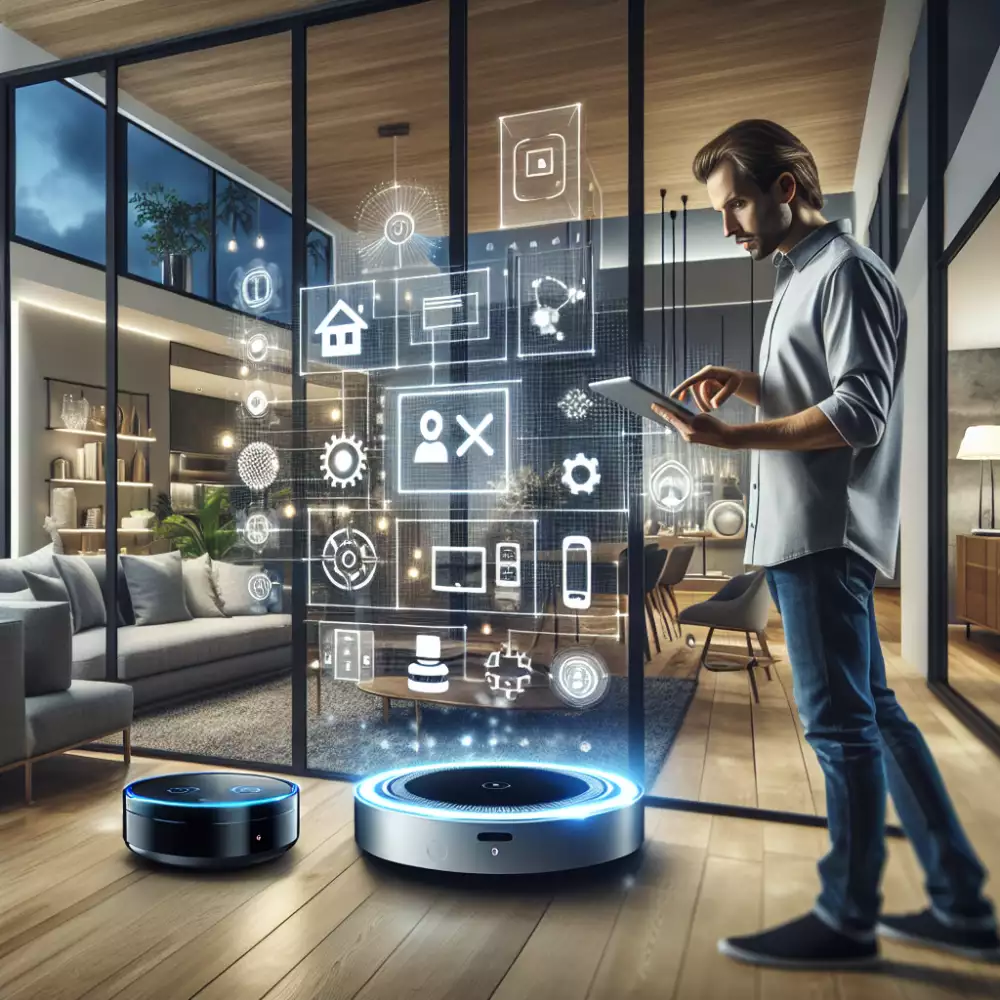
Smart Appliances
Smart appliances are transforming houses into futuristic, automated living spaces. These appliances, equipped with internet connectivity and advanced sensors, offer a new level of convenience, efficiency, and control over our homes. Imagine your oven preheating as you head home from work, your refrigerator ordering groceries based on what's running low, or your washing machine starting a load of laundry when energy rates are lowest. This is the reality smart appliances bring. They can be controlled remotely through smartphones or voice assistants, allowing you to manage your home from anywhere. Beyond convenience, smart appliances offer energy efficiency. Smart thermostats learn your temperature preferences and adjust automatically, reducing energy consumption. Smart refrigerators optimize cooling cycles based on usage patterns, saving electricity. This integration of technology not only simplifies daily tasks but also contributes to a more sustainable lifestyle. As technology evolves, we can expect even more sophisticated features and seamless integration in the future.
An automated home doesn't just react, it anticipates. It's a haven of seamless convenience, where technology fades into the background and comfort takes center stage.
Elias Thorne
Voice Control Integration
Voice control is transforming how we interact with our homes, making automation more accessible and intuitive. Imagine controlling your lights, temperature, appliances, and entertainment systems with simple voice commands. With voice control integration, this futuristic vision is now a reality. Smart home platforms seamlessly integrate with popular voice assistants like Amazon Alexa, Google Assistant, and Apple HomeKit, allowing you to control various aspects of your home using natural language.
Want to dim the lights for a movie night? Just ask. Need to set the perfect temperature? Your voice assistant can handle it. Voice control eliminates the need for multiple apps or physical controls, simplifying your daily routines and enhancing convenience. Beyond basic commands, voice control enables you to create personalized scenes and automation. For example, you can create a "good morning" scene that turns on the lights, adjusts the thermostat, and starts your coffee maker with a single voice command.
As voice recognition technology advances, we can expect even more sophisticated and personalized experiences in the future. Voice control is not just about convenience, it also enhances accessibility for individuals with mobility limitations, making it easier for them to interact with and control their surroundings.
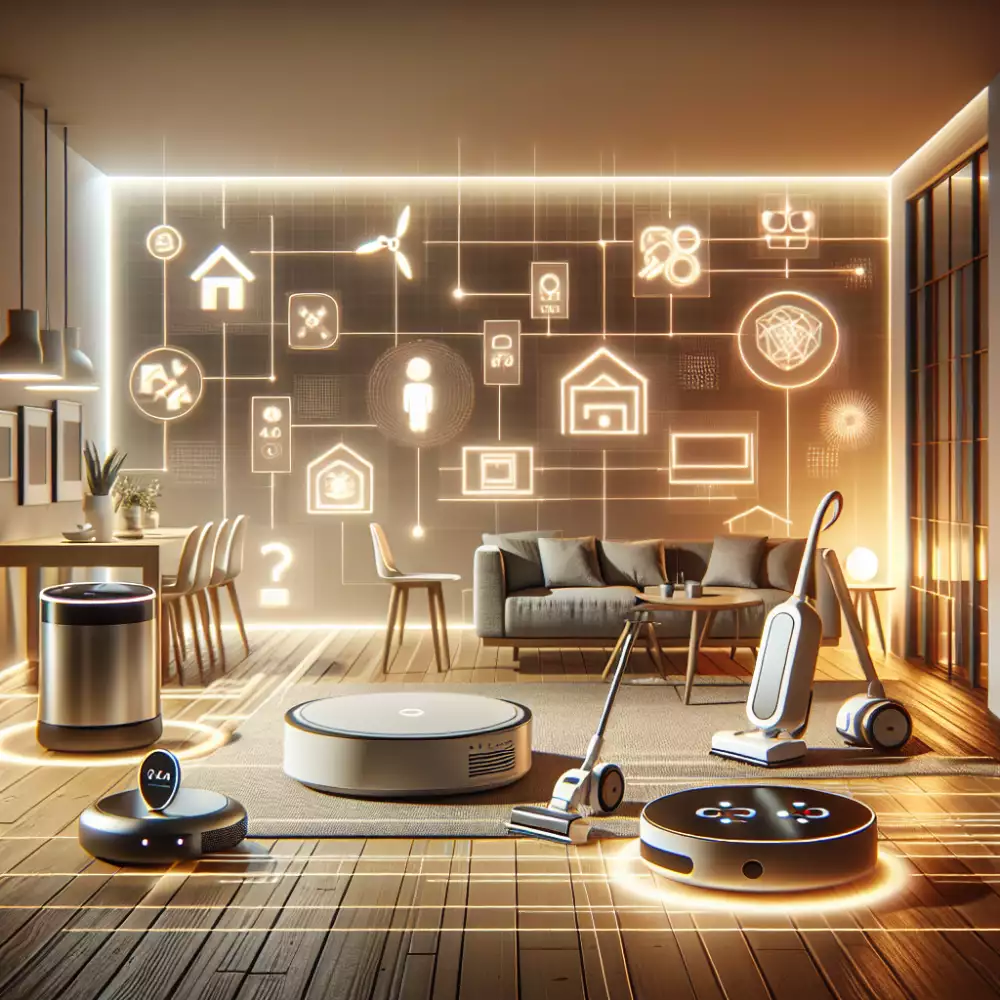
Energy Management Systems
Energy management systems (EMS) are becoming increasingly popular in automated homes. An EMS can help you optimize your energy usage, save money on your utility bills, and reduce your carbon footprint. They work by monitoring your energy consumption and using that data to automatically control your devices and systems.
For example, an EMS can be used to turn off lights when you leave a room, adjust the thermostat based on your schedule, or even control your appliances to run during off-peak hours. This level of automation can make a big difference in your energy usage, especially when combined with other smart home technologies.
Imagine your home pre-cooling itself before you arrive, ensuring a comfortable temperature without wasting energy while you're away. Or picture your lights dimming gradually as you prepare for bed, creating a relaxing ambiance while conserving electricity.
These systems can also provide valuable insights into your energy consumption habits. By tracking your energy usage over time, an EMS can help you identify areas where you can save even more. Some systems can even connect to your utility company's data, allowing you to take advantage of time-of-use pricing or other energy-saving programs.
Automated Window Treatments
Automated window treatments are a game-changer for a truly smart home experience. Imagine waking up to the sunrise gently filling your bedroom, or having your blinds automatically adjust throughout the day to optimize natural light and energy efficiency. That's the power of motorized blinds, shades, and curtains. By integrating with your smart home system, you can control your window treatments with a simple voice command or through an app on your smartphone. Schedule them to open and close at specific times, or set them to respond to the sun's position for optimal temperature regulation. This level of automation not only adds convenience but also enhances your home's energy efficiency. By automatically adjusting to the amount of sunlight, you can reduce heat gain in the summer and prevent heat loss in the winter, leading to potential savings on your energy bills. Moreover, automated window treatments offer an extra layer of security. When you're away, you can program them to create the illusion of occupancy, deterring potential intruders. With a variety of styles, fabrics, and integrations available, automated window treatments seamlessly blend into any home decor while providing a modern and sophisticated touch to your living spaces.
| Feature | Traditional Home | Automation Home |
|---|---|---|
| Lighting Control | Manual switches | Smartphone app, voice control, scheduled timers |
| Temperature Regulation | Manual thermostat adjustment | Smart thermostat with learning capabilities, remote access |
| Security System | Traditional alarm system, physical key entry | Integrated sensors, remote monitoring, smart locks with keyless entry |
| Appliance Control | Manual operation | Remote control via smartphone, voice commands, scheduled operation |
| Entertainment System | Separate remote controls, manual operation | Centralized control system, voice commands, integration with streaming services |
Smart Irrigation Systems
Smart irrigation systems are revolutionizing how we water our lawns and gardens, seamlessly integrating with the broader trend of home automation. These systems leverage advanced sensors and weather data to deliver the precise amount of water your plants need, exactly when they need it. Gone are the days of fixed watering schedules and wasteful overwatering.
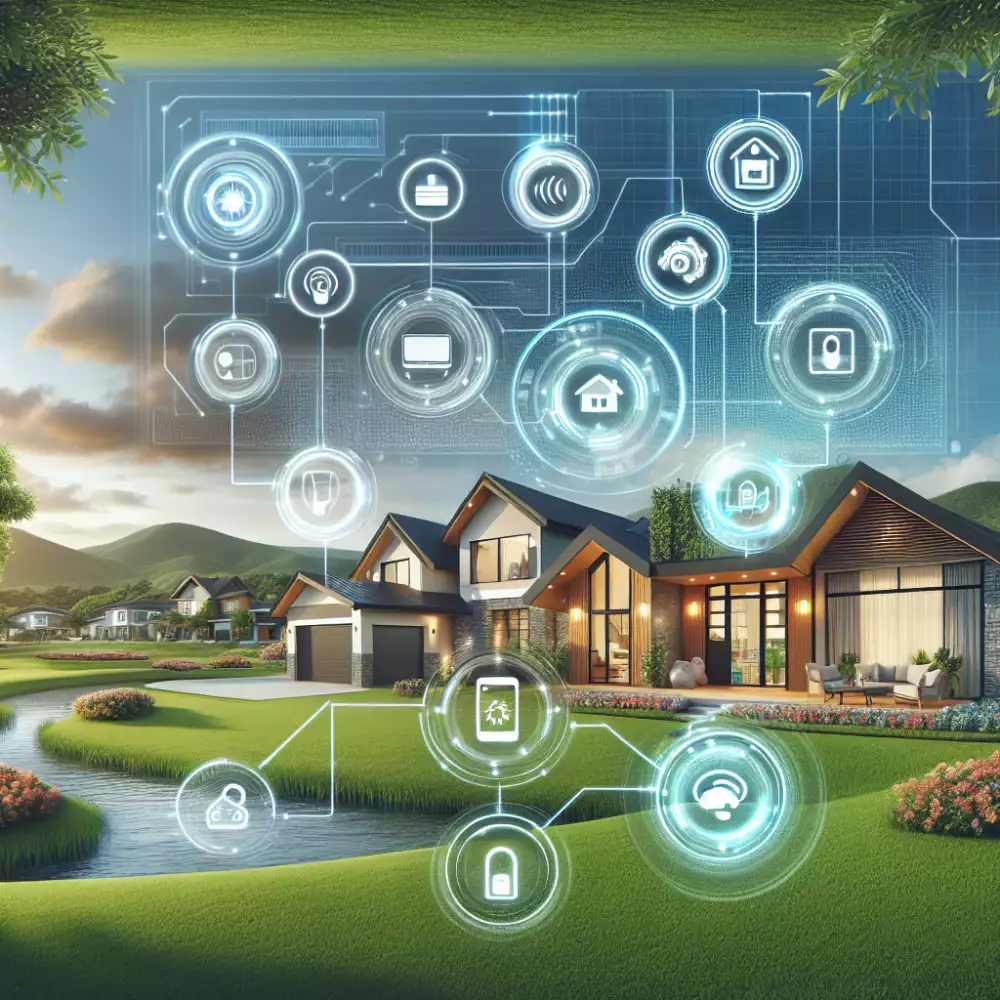
Imagine this: your smart irrigation system wakes up with the sun, but instead of blindly following a pre-set program, it first consults real-time weather information. If rain is forecasted, it knows to postpone watering. If it's particularly hot and dry, it might adjust the watering duration to compensate.
But it doesn't stop there. Moisture sensors strategically placed in the ground provide real-time feedback on soil conditions. This data is fed back to the system, allowing it to fine-tune watering cycles even further. The result? A lush, healthy lawn and garden that thrives while conserving water and saving you money.
Integration with other smart home devices adds another layer of convenience and efficiency. Control your irrigation system through a user-friendly app on your smartphone, set up custom watering zones for different plant types, and even receive notifications if there's a leak or other issue. With a smart irrigation system, you can enjoy peace of mind knowing your garden is always in good hands, even when you're away.
Automated Home Access Control
Automated home access control is a key aspect of the modern smart home. It leverages technology to provide keyless entry and enhanced security. Smart locks are central to this, allowing homeowners to lock and unlock doors remotely using a smartphone app. These locks often feature various access methods, including numeric codes, fingerprint scanning, and Bluetooth proximity detection.
Homeowners can grant temporary or permanent access to family members, guests, or service providers. Some systems integrate with smart doorbells, providing visual verification before remotely unlocking the door. Automated access control extends beyond the front door. Garage doors can be controlled remotely, and smart security systems can be programmed to grant access to specific individuals during set times.
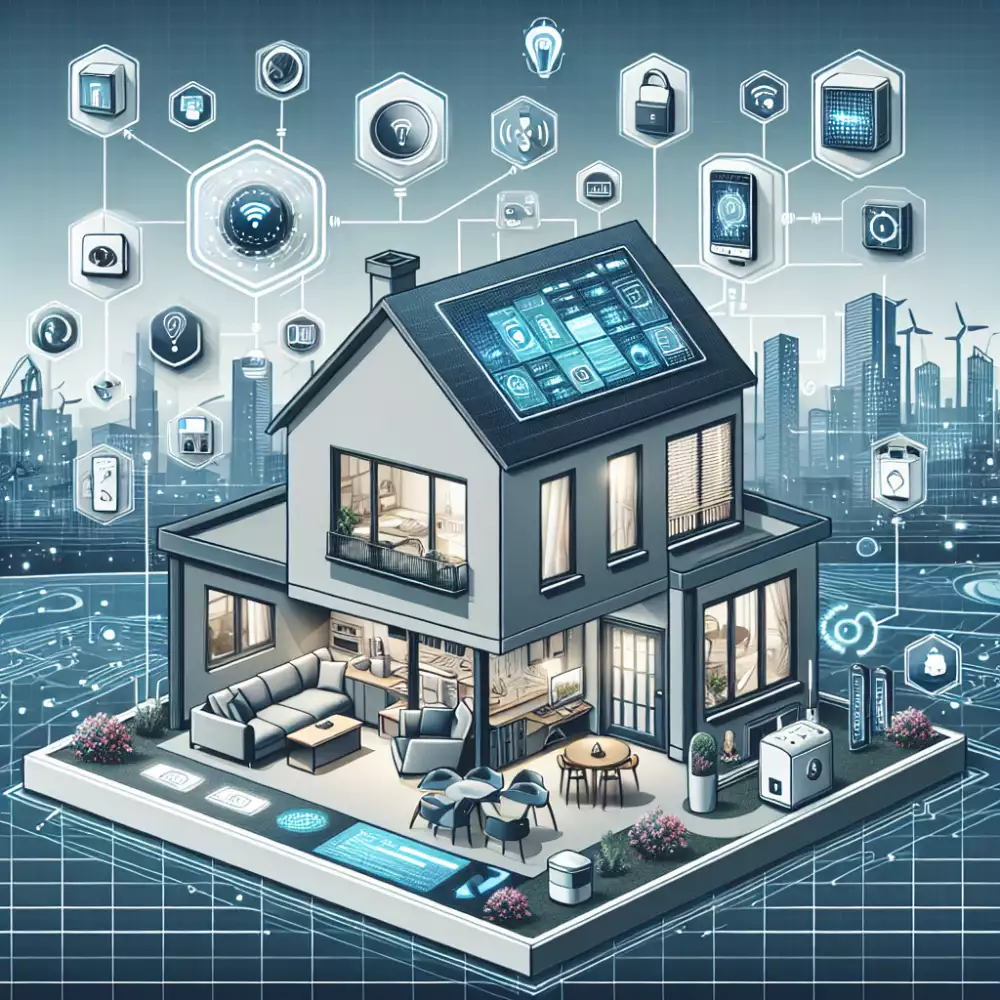
The benefits of automated home access control are numerous. It provides convenience, eliminating the need for traditional keys. Security is enhanced through features like activity logs, remote monitoring, and instant alerts. Moreover, it offers flexibility in managing access for different individuals and situations. As smart home technology advances, automated home access control is expected to become increasingly sophisticated and integrated into our daily lives.
Home Network and Connectivity
A robust and reliable home network forms the backbone of any smart home. It acts as the central nervous system, allowing devices to communicate and share information seamlessly. A strong network ensures that your smart home runs smoothly, from streaming high-definition entertainment to receiving real-time security alerts.
Ethernet: Considered the most stable and reliable connection type, ideal for devices requiring high bandwidth like smart TVs, gaming consoles, and desktop computers.
Wi-Fi: Offers flexibility and convenience for connecting various devices wirelessly, including smartphones, tablets, smart appliances, and voice assistants. Opt for a mesh Wi-Fi system for larger homes to eliminate dead zones and ensure consistent coverage.
Powerline Communication (PLC): Utilizes your home's existing electrical wiring to transmit data, offering a viable alternative in areas where Wi-Fi signals struggle to reach.
Zigbee and Z-Wave: Low-power wireless protocols specifically designed for smart home devices, offering energy efficiency and reliable communication for sensors, smart plugs, and other automation devices.
Bluetooth: Suitable for short-range communication, commonly used for connecting devices like wireless speakers, headphones, and smart locks to your smartphone or hub.
A well-planned home network incorporates a combination of these technologies to cater to the specific needs of your smart home ecosystem. A robust network ensures that your devices operate at their best, providing a seamless and responsive smart home experience.
Predictive Maintenance Features
Smart homes are becoming increasingly sophisticated, and with that sophistication comes the opportunity for predictive maintenance. Predictive maintenance uses sensors and data analysis to identify potential problems before they occur. This can help you avoid costly repairs and keep your home running smoothly.
One of the most common applications of predictive maintenance in the home is for HVAC systems. By monitoring data such as temperature, humidity, and airflow, these systems can identify potential problems like a failing compressor or a clogged filter. This allows you to schedule maintenance before the problem becomes serious, preventing a breakdown and extending the life of your system.

Appliance manufacturers are also incorporating predictive maintenance features into their products. Smart appliances can monitor their own performance and alert you to potential problems. For example, your smart refrigerator might be able to detect a failing compressor, while your smart oven could warn you about a faulty heating element. This early warning gives you time to schedule repairs or order replacement parts, minimizing downtime and inconvenience.
Predictive maintenance can also be applied to other areas of your home. For example, some smart home systems can monitor water usage and detect leaks. This can help you save money on your water bill and prevent serious water damage. Similarly, some systems can monitor your home's electrical system and alert you to potential fire hazards, such as overloaded circuits or faulty wiring.
Overall, predictive maintenance is a powerful tool that can help you keep your home running smoothly. By identifying potential problems early on, you can avoid costly repairs and keep your home safe and comfortable. As smart home technology continues to evolve, we can expect to see even more innovative applications of predictive maintenance in the future.
Integration and Interoperability
A truly smart home goes beyond isolated gadgets. It's about seamless integration and interoperability, where devices and systems communicate and work together harmoniously. Imagine a scenario where your smart thermostat doesn't just adjust the temperature but also coordinates with your smart blinds to optimize energy efficiency based on the time of day and sunlight. Or picture your home security system seamlessly integrating with your smart lighting, automatically illuminating pathways and deterring potential intruders.
This level of integration requires a robust home automation hub or platform that acts as the central nervous system, connecting and coordinating all your smart devices. Popular options include Amazon Alexa, Google Home, Apple HomeKit, and Samsung SmartThings. These platforms offer varying levels of device compatibility and automation capabilities, so it's crucial to choose one that aligns with your specific needs and preferences.
Interoperability, the ability of devices from different manufacturers to communicate and work together, is paramount in a truly integrated smart home. Look for devices and platforms that support open standards and protocols like Zigbee, Z-Wave, and Matter. These standards ensure that your smart home remains flexible and future-proof, allowing you to seamlessly integrate new devices and technologies as they emerge.
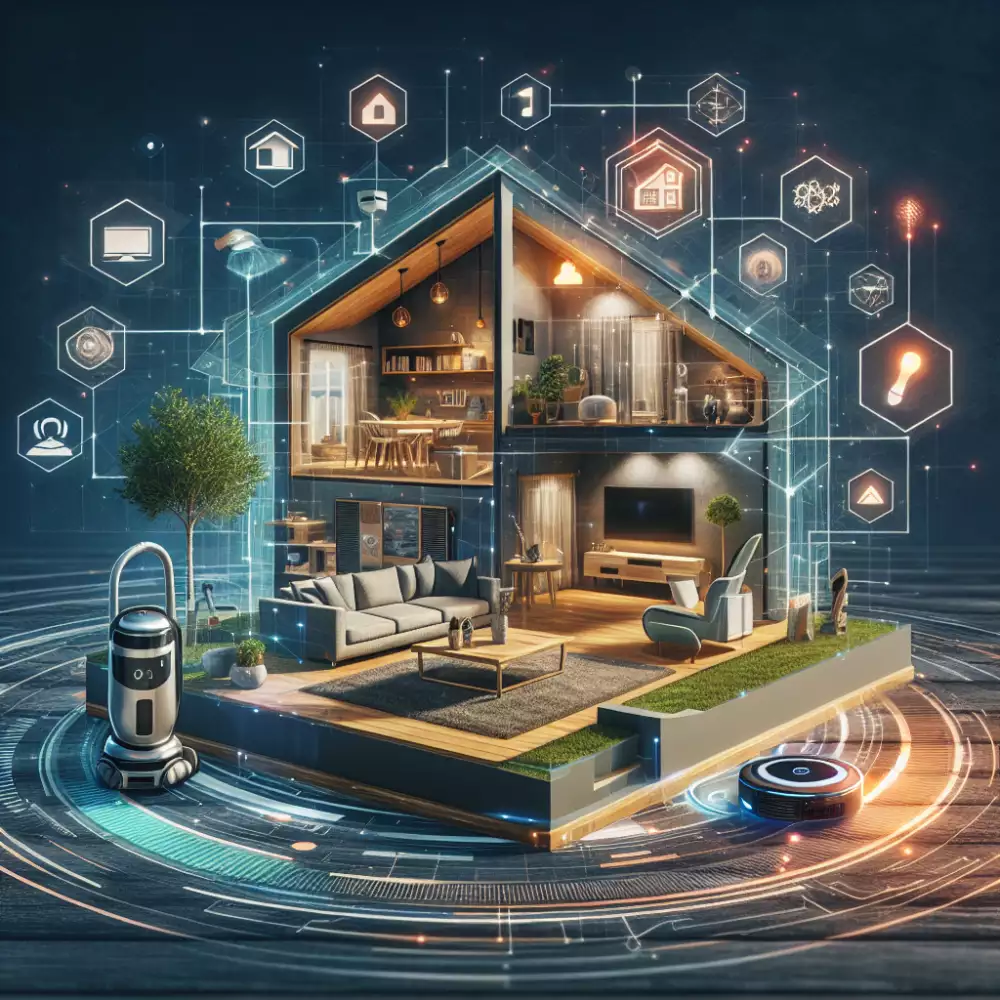
A well-integrated and interoperable smart home offers unparalleled convenience, comfort, and peace of mind. From automated lighting and temperature control to enhanced security and entertainment, the possibilities are virtually limitless. As technology continues to evolve, we can expect even more seamless and sophisticated integration in the future, further blurring the lines between our physical and digital worlds.
Emerging Trends in Home Automation
Voice assistants like Amazon Alexa and Google Assistant have become synonymous with smart homes. We use voice commands to control everything from lighting and temperature to entertainment systems and security cameras. This hands-free approach to home management is driving the development of more sophisticated voice recognition software and compatible devices.
Artificial Intelligence (AI) Gets Smarter
AI is the brain behind truly intuitive home automation. AI-powered systems can learn your preferences and habits, anticipating your needs and automating tasks accordingly. Imagine your smart home automatically adjusting the lighting based on your mood or preheating the oven as you start preparing dinner.
The Rise of Matter
Matter is a new industry standard designed to simplify smart home ecosystems. It aims to solve the compatibility issues that often plague smart home devices from different manufacturers. With Matter, you can seamlessly connect and control all your devices, regardless of the brand, using a single app or voice assistant.
Energy Efficiency at the Forefront
As sustainability becomes increasingly important, home automation is playing a crucial role in energy conservation. Smart thermostats, automated lighting systems, and smart appliances optimize energy consumption based on your usage patterns and real-time conditions. This not only reduces your environmental footprint but also leads to significant cost savings on your energy bills.
Enhanced Home Security
Smart security systems are becoming more sophisticated and proactive. Connected cameras, motion sensors, and smart locks work together to provide comprehensive home protection. Real-time alerts, remote monitoring capabilities, and even facial recognition features offer homeowners an unprecedented level of security and peace of mind.
Publikováno: 17. 08. 2024
Kategorie: Technology



